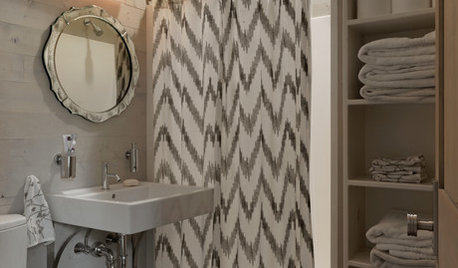does anyone supplement CO2, and how?
hairmetal4ever
19 years ago
Related Stories

INSIDE HOUZZHow Much Does a Remodel Cost, and How Long Does It Take?
The 2016 Houzz & Home survey asked 120,000 Houzzers about their renovation projects. Here’s what they said
Full Story
BATHROOM DESIGNThe Cure for Houzz Envy: Bathroom Touches Anyone Can Do
Take your bath from blah to ‘ahhhh’ with just a few easy and inexpensive moves
Full Story
COMMUNITYCommunity Building Just About Anyone Can Do
Strengthen neighborhoods and pride of place by setting up more public spaces — even small, temporary ones can make a big difference
Full Story
BEDROOMSThe Cure for Houzz Envy: Master Bedroom Touches Anyone Can Do
Make your bedroom a serene dream with easy moves that won’t give your bank account nightmares
Full Story
DECORATING GUIDESThe Cure for Houzz Envy: Guest Room Touches Anyone Can Do
Make overnight guests feel comfy and cozy with small, inexpensive niceties
Full Story
DECORATING GUIDES7 Bedroom Styling Tricks Anyone Can Do
Short on time or money? You can spruce up your bedroom quickly and easily with these tips
Full Story
CLOSETSThe Cure for Houzz Envy: Closet Touches Anyone Can Do
These easy and inexpensive moves for more space and better organization are right in fashion
Full Story
MUDROOMSThe Cure for Houzz Envy: Mudroom Touches Anyone Can Do
Make a utilitarian mudroom snazzier and better organized with these cheap and easy ideas
Full Story
HOME OFFICESThe Cure for Houzz Envy: Home Office Touches Anyone Can Do
Borrow these modest design moves to make your workspace more inviting, organized and personal
Full Story
KITCHEN DESIGNThe Cure for Houzz Envy: Kitchen Touches Anyone Can Do
Take your kitchen up a notch even if it will never reach top-of-the-line, with these cheap and easy decorating ideas
Full Story



hairmetal4everOriginal Author
hairmetal4everOriginal Author
Related Discussions
Some Perspective re Synthetic:Organic Nutrient Supplementation
Q
Anyone have macular degeneration or know anyone that does?
Q
Can something besides CO2 cause illness?
Q
Supplemental Winter Lighting
Q
jkirk3279
groman
moferg
jkirk3279
hairmetal4everOriginal Author
markapp
vegomatic
DgreenR
upforachallenge
hairmetal4everOriginal Author
myrmecodia
hairmetal4everOriginal Author
myrmecodia
hairmetal4everOriginal Author
myrmecodia
hairmetal4everOriginal Author
DgreenR
hairmetal4everOriginal Author
weebus
mitchkanton
gardenerwantabe
nathanhurst
Karen Pease
agardenstateof_mind
oakhill (zone 9A, Calif.)
Karen Pease
chris_in_iowa
oakhill (zone 9A, Calif.)
Karen Pease
Karen Pease
nathanhurst
Karen Pease
nathanhurst
oakhill (zone 9A, Calif.)
chris_in_iowa
Karen Pease
oakhill (zone 9A, Calif.)
Karen Pease
chris_in_iowa
stressbaby
oakhill (zone 9A, Calif.)
oakhill (zone 9A, Calif.)
chris_in_iowa
Karen Pease
chris_in_iowa
orchiddude